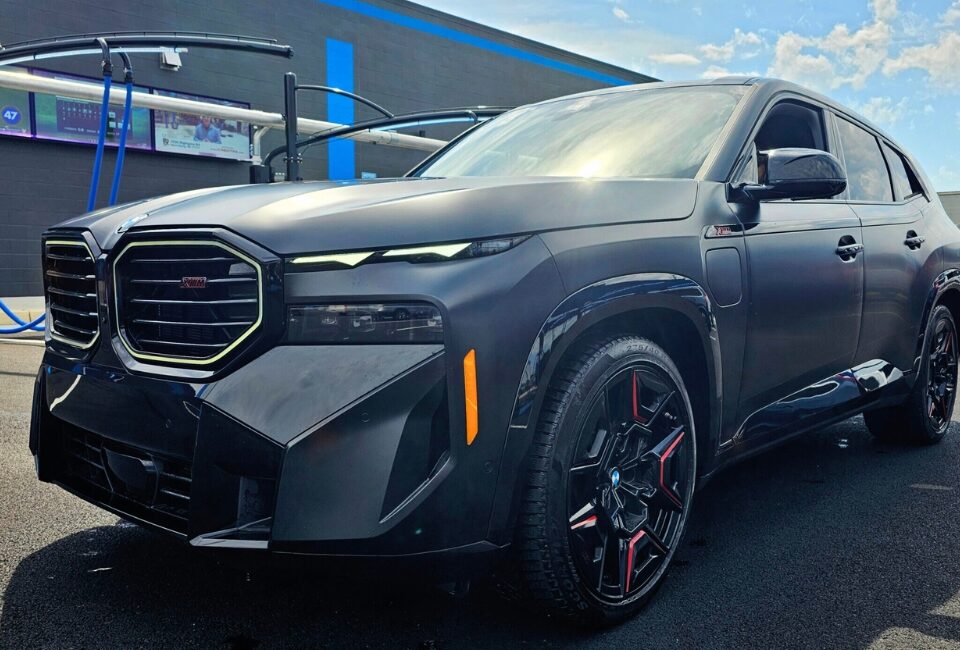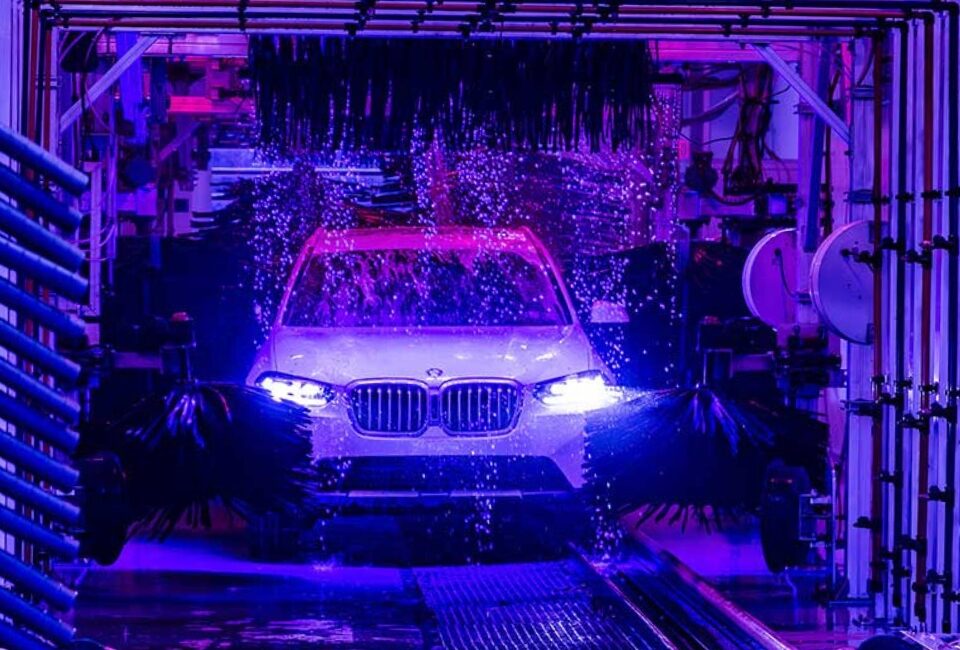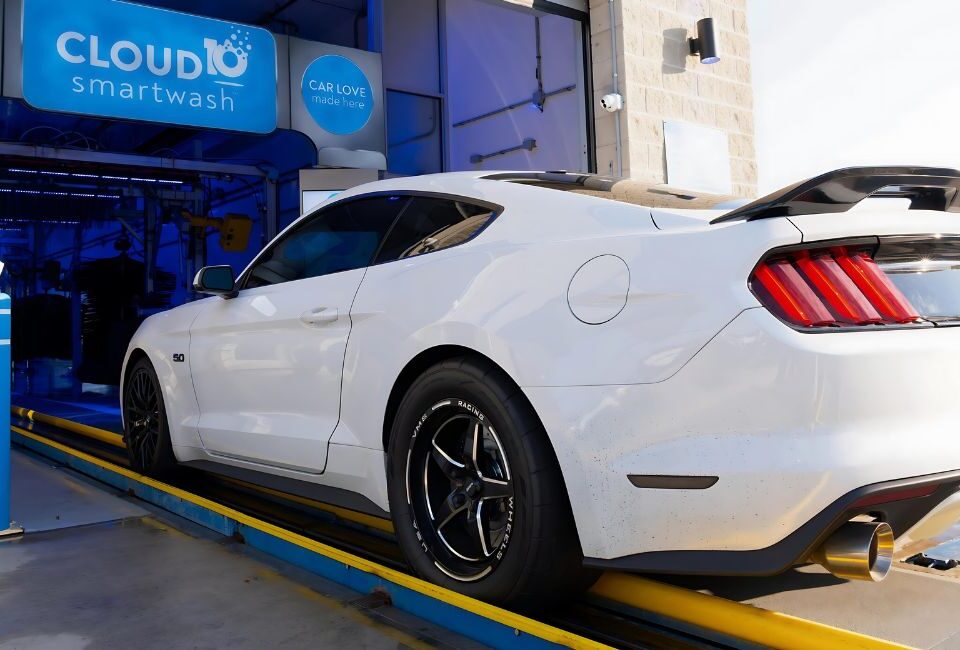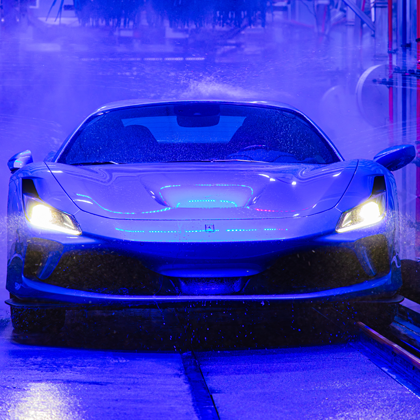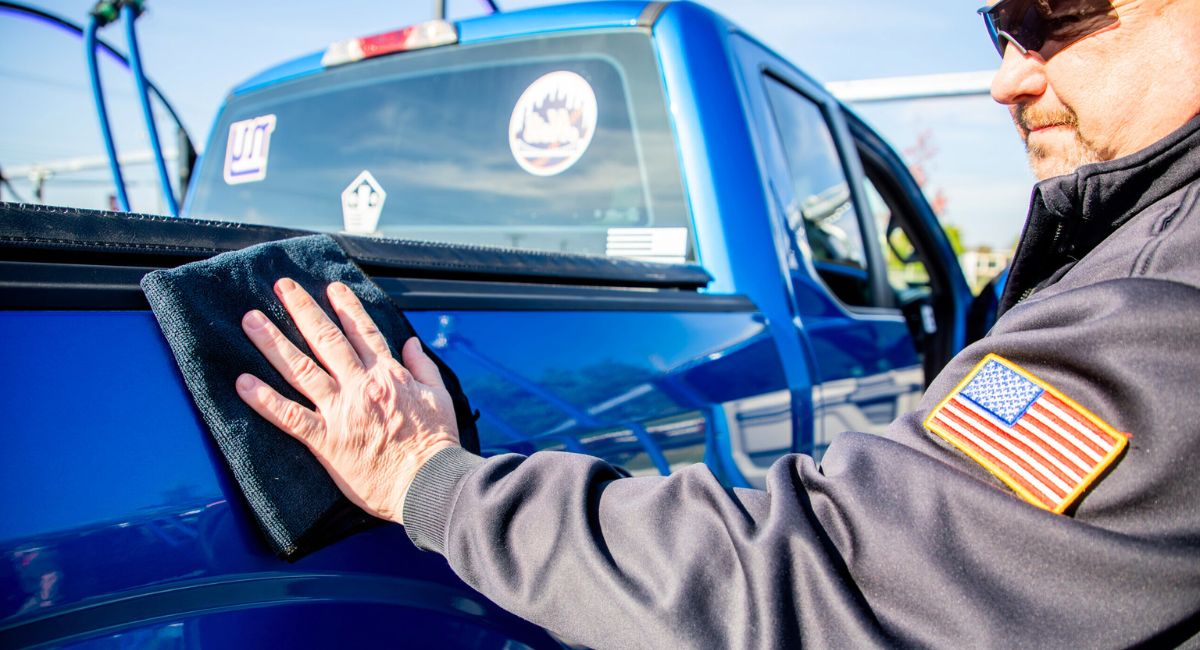
When it comes to keeping your car looking fresh and shiny, you've probably heard about Paint Protection Film (PPF) and Ceramic Coating.
Both offer excellent protection for your vehicle’s paint, but which one is better?
Let’s dive into the nitty-gritty of PPF vs. Ceramic Coating, their differences, pros, and cons, and help you decide what’s best for your ride.
What is PPF (Paint Protection Film)?
So, what’s the deal with PPF? Paint Protection Film, or PPF, is like an invisible shield for your car. It’s a clear, thick film that’s applied to your car's paint to protect it from scratches, dings, and other road hazards.
PPF has been around for a while, originally developed to protect military vehicles. Today, it's a go-to for car enthusiasts looking to keep their rides in top shape.
So how does PPF work? The science behind PPF is pretty cool. It’s made from a thermoplastic urethane material that’s super durable and flexible.
When applied to your car, it forms a protective layer that absorbs impacts and resists damage from things like rocks, road debris, and even bird droppings.
Now, let’s look at the types. There are a few different types of PPF out there. Some are thicker, offering more protection, while others are thinner and less noticeable.
Popular brands like XPEL, 3M, and SunTek have their own versions, each with unique features and benefits.
What is Ceramic Coating?
Now, let’s talk about Ceramic Coating. This stuff is like a magic potion for your car’s paint. Ceramic Coating is a liquid polymer that chemically bonds with your car’s paint. It creates a protective layer that’s super hard and super shiny.
It’s been a game-changer in the car care world. It gives car owners a way to protect their paint and make it look amazing.
Ceramic Coating works by filling in the tiny pores and imperfections in your car’s paint. Once applied, it hardens into a solid layer that repels water, dirt, and other contaminants. This means your car stays cleaner longer and is easier to wash.
There are various types of ceramic coatings available, from professional-grade products to DIY kits. Popular brands include Gtechniq, Ceramic Pro, and Adam’s Polishes.
Each has its own formula and application process, but they all aim to provide long-lasting protection and shine.
Cloud10 Smartwash offers ceramic coating in our Fusion Graphene and Fusion Ceramic smartwashes, which complement our comprehensive vehicle care cleaning products. Our ceramic coating service is designed to provide long-lasting protection and enhance the aesthetic appeal of your vehicle.
We use advanced ceramic coating from SIMONIZ that creates a durable, hydrophobic layer on your car’s paint surface, repelling water, dirt, and other contaminants. This coating adds a deep gloss and shine to your vehicle, making it easier to maintain.
Key Differences Between PPF and Ceramic Coating
One of the main differences between PPF and Ceramic Coating is how they’re applied. PPF is like applying a big, clear sticker to your car. It requires a lot of precision and skill to get it right, which is why it’s best left to professionals.
On the other hand, Ceramic Coating is a liquid that can be applied at home with a sponge or applicator pad. While you can do it yourself, the professional application with Cloud10 ensures a more even and durable finish, while saving you time and money
When it comes to durability, PPF has the upper hand. It’s thicker and can absorb impacts better than Ceramic Coating. PPF can last up to 10 years, depending on the quality and maintenance. Ceramic Coating, while still durable, usually lasts between 2 to 5 years.
However, it offers better resistance to chemicals and UV rays, keeping your car’s paint looking new.
PPF is also excellent at protecting against physical damage like rock chips, scratches, and minor dings. Ceramic Coating, on the other hand, excels at repelling water, dirt, and grime, making your car easier to clean.
It also protects against UV rays and chemical stains, but it won’t save you from a nasty rock chip like PPF can.
Finally, both PPF and Ceramic Coating can enhance your car’s appearance, but they do it in different ways. PPF is virtually invisible when applied correctly, preserving the original look of your paint. Ceramic Coating, however, adds a deep gloss and shine that makes your car look freshly waxed all the time.
If you’re after that “wet” look, Ceramic Coating is the way to go.
Pros and Cons of PPF
Here's a table outlining the pros and cons of PPF (Paint Protection Film):
|
Pros of PPF |
Cons of PPF |
|
Superior protection against physical damage |
Higher initial cost |
|
Self-healing properties (some types) |
Potential for visible edges depending on installation |
|
High durability |
Professional installation required |
|
Preserves original paint appearance |
Maintenance and occasional replacement required |
|
Provides peace of mind for long-term protection |
Limited availability of DIY options |
Pros and Cons of Ceramic Coating
Here's a table outlining the pros and cons of Ceramic Coating
|
Pros of Ceramic Coating |
Cons of Ceramic Coating |
|
Provides long-lasting protection |
Less effective against physical damage like rock chips |
|
Enhances gloss and depth of paint |
Requires professional application for best results |
|
Repels water, dirt, and contaminants |
Requires regular maintenance and reapplication |
|
Creates a smooth and shiny finish |
Higher initial cost compared to traditional wax |
|
Offers UV protection and chemical resistance |
Potential for improper application if not done correctly |
Cost Comparison
When it comes to the initial costs, PPF is generally more expensive than Ceramic Coating. PPF installation can range from $500 to $5,000. It usually depends on how much of the car you want to cover.
Ceramic Coating, on the other hand, can cost between $300 and $2,000, depending on the product and professional application. However, when you opt for a Fusion Graphene or Fusion Ceramic smartwash, the ceramic coating is included in the price of your smartwash. This not only saves you money, but is more efficient and time saving for you.
In the long run, both PPF and Ceramic Coating require some maintenance. PPF might need touch-ups or replacements if it gets damaged, while Ceramic Coating requires reapplication every few years. At Cloud10, we even recommend reapplying ceramic coating every few weeks to increase the protection and longevity of your car’s paint.
Overall, PPF might have higher long-term costs due to potential repairs.
Maintenance and Care

Keeping your PPF in good shape is pretty straightforward. Regular washing with a gentle car shampoo and avoiding abrasive cleaners is key.
At Cloud10 Smartwash, we recommend using our Foam Bath - Presoak Body Foam to safely remove dirt and grime without damaging the film. Avoid pressure washers too close to the edges to prevent lifting.
Maintaining a Ceramic Coating involves regular washing and occasional top-ups with a ceramic spray. At Cloud10 Smartwash, we use specialty products like our Triple Foam Polish and Simoniz Ceramic Sealant to keep your coating in top condition.
Avoid using harsh chemicals and stick to pH-neutral shampoos.
Which is Better for Your Vehicle?
Choosing between PPF and Ceramic Coating depends on your specific needs. If you drive a lot on highways or in areas with a lot of debris, PPF might be the better choice for its physical protection.
If you’re more concerned with maintaining a pristine, glossy finish and making your car easier to clean, Ceramic Coating is a great option.
Industry professionals often recommend a combination of both for the best protection. PPF can be applied to high-impact areas like the front bumper and hood, while Ceramic Coating can cover the rest of the vehicle. They provide overall protection and a stunning shine.
Customer testimonials often highlight the benefits of combining both for optimal results.
How Cloud 10 Smartwash Use PPF and Ceramic Coating
At Cloud10 smartwash, our Fusion Graphene and Fusion Ceramic smartwashes are excellent options for those looking for expert and professionally applied ceramic coating. Our smartwashes are designed to giveyour car that extra sparkle while providing long-lasting protection.
We use advanced products like the SIMONIZ Ceramic and SIMONIZ Graphene to bond with your vehicle’s paint, creating a hydrophobic barrier that repels water and contaminants. The result? A deeper, more vibrant shine that lasts.
Our customers love the enhanced durability and the brilliant finish of the blend of SIMONIZ Graphene and Ceramic provided in the Fusion Graphene smartwash. Check out our reviews to see exactly what our customers are talking about!
Wrapping Up
When it comes to protecting your car’s paint, both PPF and Ceramic Coating have their strengths. PPF offers superior protection against physical damage, while Ceramic Coating provides a stunning gloss and excellent resistance to environmental contaminants.
At Cloud10 Smartwash, you can enjoy an easy, fast and effective application of Ceramic coating that provides a long lasting shine and protection that will turn heads as you drive by. We ensure your vehicle gets the best wash out there, so you’ll never want to go to a regular car wash again.
Ready to give your car the ultimate protection? Get in touch with us today and experience the future of vehicle care.
FAQs
Which provides better protection against scratches, PPF or Ceramic Coating?
PPF offers superior protection against scratches and rock chips due to its thick, impact-resistant film. Ceramic Coating enhances gloss and repels contaminants but does not prevent physical damage as PPF does.
Can PPF and Ceramic Coating be applied together for enhanced protection?
Yes, many car owners opt to apply PPF to high-impact areas like the front bumper and Ceramic Coating to the rest of the vehicle. This combination provides comprehensive protection against both physical and environmental damage.
How long does PPF last compared to Ceramic Coating?
PPF can last up to 10 years with proper care and maintenance, whereas Ceramic Coating typically lasts between 2 to 5 years before requiring reapplication. The longevity depends on factors like environmental conditions and maintenance practices.
What are the maintenance requirements for PPF and Ceramic Coating?
PPF requires minimal maintenance, mainly consisting of regular washing with a gentle car shampoo. Ceramic Coating needs periodic maintenance with specific products to maintain its protective properties and glossy finish.
Is it possible to remove PPF or Ceramic Coating once applied?
Yes, both PPF and Ceramic Coating can be removed, but the process requires professional expertise to avoid damaging the underlying paint. Removal allows for reapplication or restoration of the original paint surface as needed.


